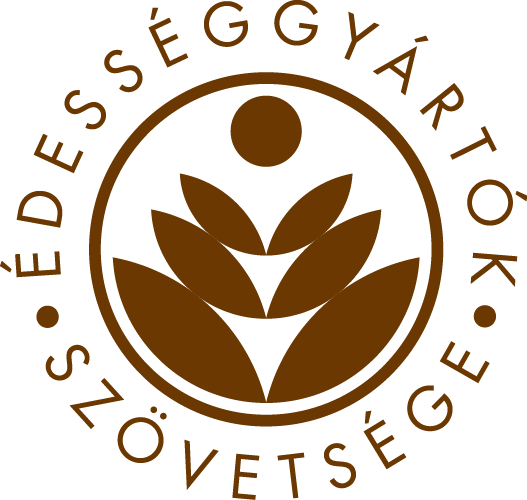Last year’s trends already indicated that 2020 would not be the best year for confectioners. Last year, Easter suffered one of the biggest declines in the domestic confectionery market, with sales of seasonal Easter confectionery products falling by 20-25 percent.
Approximately 5% of the annual chocolate consumption takes place in this season. Under normal circumstances, 900-1000 tonnes of Easter sweets, primarily chocolate bunnies and eggs, are consumed annually on the Hungarian market in the amount of about HUF 4-5 billion. During Easter in 2020, 820 tonnes of Easter confectionary was sold, in the value of approximately HUF 3 billion.
This year’s Easter coincides with the third, and thus far most dangerous wave of the pandemic affecting the most amount of people. We hope that even if the demand becomes more subdued at Easter, we will move in a positive direction from last year’s rock bottom – said Sándor Sánta, President of the Association of Hungarian Confectionery Manufacturers. According to his optimistic estimate, the Easter confectionery market may grow by 3-4% this year, which means 850 tonnes of sweets, and the sales revenue may exceed HUF 3 billion.
The effects of the pandemic were felt most strongly by the smaller domestic manufacturers, who had previously managed to get their products into airports, downtown stores and exclusive cafes. While online sales have skyrocketed almost everywhere, in the case of sweets, this can’t completely replace traditional sales channels. These smaller producers in particular are eagerly awaiting an increase in the vaccination levels and the subsidence of the epidemic, so that their sales will take a powerful positive turn, Sándor Sánta said.
We compensated at Christmas
According to Alíz Némethné Szabó, Manager of the Sweets and Confectionery line at METRO last year, it was a challenge to predict the volume of sweets available for sale. Forecasts are made for the Easter season in November-December, while they are made for the Christmas season around May. Therefore, obviously, in 2019, when we could not guess that a pandemic would break out, the Easter sweets demands of 2020 were overestimated.
As a result, by Christmas, merchants already placed restrained orders, reduced by 10 to 20 percent. At METRO Kereskedelmi Kft., however, the Christmas seasonal confectionery, the chocolate Santas and Christmas candies eventually sold beyond expectations and they were able to satisfy the demand by re-ordering these products. Thus, the Easter losses in 2020 were somewhat offset by the period that followed when consumption showed a step-by-step increase. At the same time, regardless of epidemic, a longer-term trend is that fewer and fewer people celebrate in the traditional way during the Easter period, many families go on hikes, take trips, the traditional custom of spraying women with water or perfume is skipped. This brings about a slow decline in the sales volume of Easter confectionery, this is also expected for 2022.
Based on the experience of METRO Kereskedelemi Kft., customers are increasingly looking for quality sweets. They prefer more expensive or even smaller-packaged sweets rather than being satisfied with a lower quality. For example, products made of coating paste have been completely pushed out of the market. The demand for quality also encourages manufacturers to provide a quality offering. The power of this process is shown by the fact that this trend could not be reversed by the pandemic either.
Alíz Némethné Szabó hopes that come Christmas 2021 manufacturers and traders will both be able to close a traditionally good season.
We are hungry for innovation
The demand for quality is also strengthened by the continuous innovation of manufacturers. There is a growing demand for sugar-free, organic, natural or vegan snacks, and premium products are also selling increasingly better, Sándor Sánta explained.
Ingenious innovations such as the masked Santa Claus of Rimóczi Art (a family-run confectionery factory) also attracted the attention of the international press. This year, the family business came up with the bunny of hope that brought about the vaccine, and in 2021 both products won the Innovation Award of the Association of Hungarian Confectionery Manufacturers.
Manufacturers have also introduced several innovations in the field of production and packaging, which make the products even more attractive.
The old often fits well with the new, because fortunately traditional sweets often meet the new expectations. There is a constant need for confectioners not only to innovate but also recall familiar or childhood flavours.
Sándor Sánta explained that the traditional Easter inspection ordered by the Ministry of Innovation and Technology (ITM) of the nearly 50 inspected products found all chocolate bunnies to be in order, and thanked the manufacturers committed to quality for this result.
Both domestically and internationally, the Association is experiencing an increase in demand for confectionery products other than chocolate, such as biscuits, wafers and fruit-rich products. This is well exemplified by the global ISM Confectionery Expo’s Innovation Awards, which were organized virtually for the first time this year. Here, fruity cereal balls and wafer snacks filled with cream cheese deserved an innovation prize in addition to a unique, natural tea-extract chocolate.

